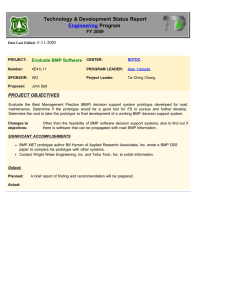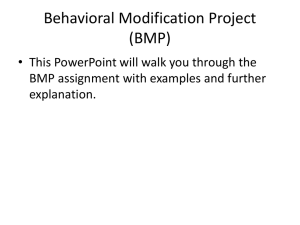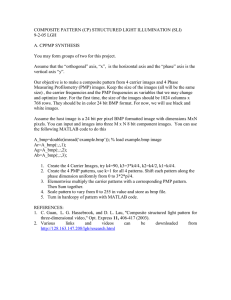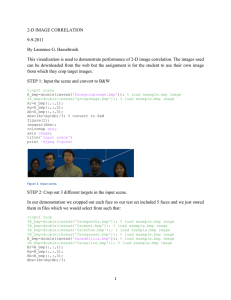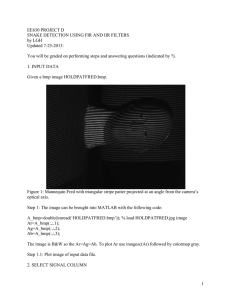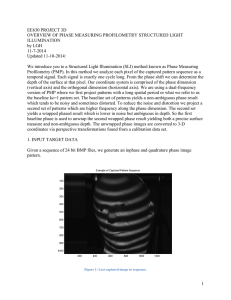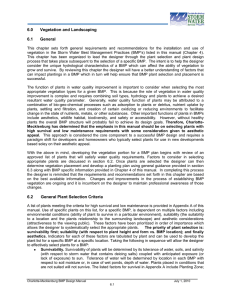Ecology LT 1-6 Retake Review a. abiotic b. biotic ____1. Drought
advertisement
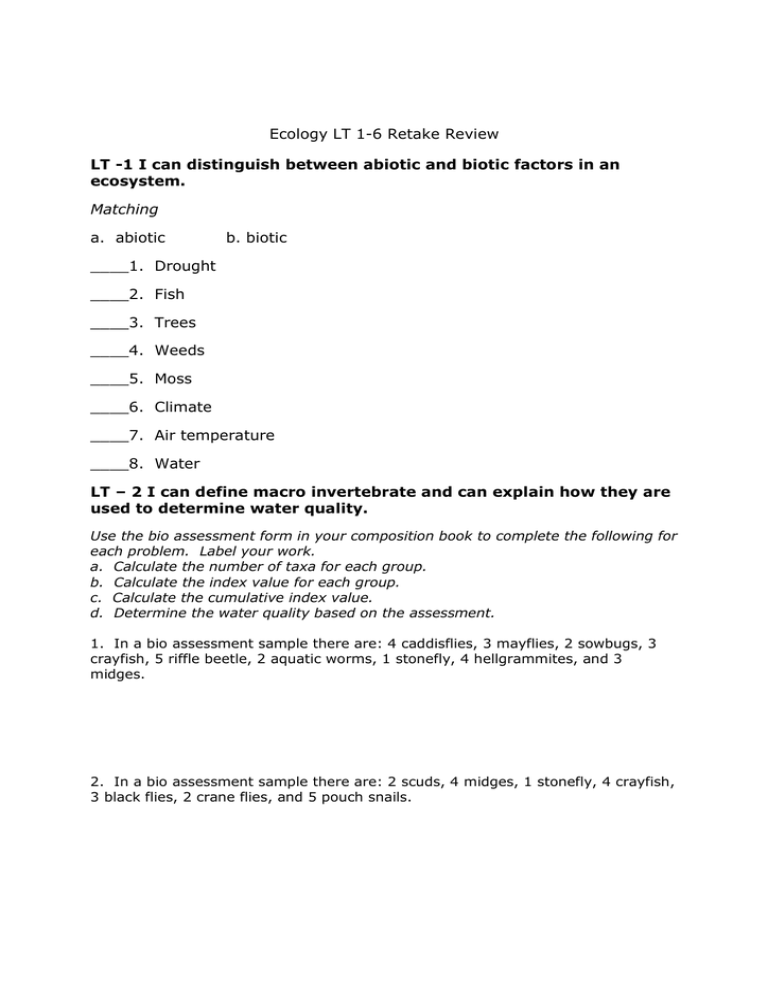
Ecology LT 1-6 Retake Review LT -1 I can distinguish between abiotic and biotic factors in an ecosystem. Matching a. abiotic b. biotic ____1. Drought ____2. Fish ____3. Trees ____4. Weeds ____5. Moss ____6. Climate ____7. Air temperature ____8. Water LT – 2 I can define macro invertebrate and can explain how they are used to determine water quality. Use the bio assessment form in your composition book to complete the following for each problem. Label your work. a. Calculate the number of taxa for each group. b. Calculate the index value for each group. c. Calculate the cumulative index value. d. Determine the water quality based on the assessment. 1. In a bio assessment sample there are: 4 caddisflies, 3 mayflies, 2 sowbugs, 3 crayfish, 5 riffle beetle, 2 aquatic worms, 1 stonefly, 4 hellgrammites, and 3 midges. 2. In a bio assessment sample there are: 2 scuds, 4 midges, 1 stonefly, 4 crayfish, 3 black flies, 2 crane flies, and 5 pouch snails. LT – 3 I can identify a variety of pollutants, their sources, and the land use associated with them. Use your foldable to identify pollution problems associated with each land use. 1. List three problems associated with agricultural areas. 2. List three problems associated with residential areas. 3. List three problems associated with urban areas. 4. List 3 advantages of pristine land concerning water quality. LT – 4 I can explain best management practices (BMP’s) and can explain how their use can reduce human impact on water quality. 1. What bmp could a farmer use to reduce erosion after harvest? Describe how this bmp works to reduce erosion. 2. What is a buffer strip? How does it help to control or reduce water pollution? 3. What bmp could a farmers use to keep livestock waste out of the water? 4. What are two different BMP’s that a homeowner could use to control excess runoff around his house? Describe how these BMP’s work. 5. In an industry, what is the purpose of a holding pool? 6. What water quality problem can the use of landscape islands help? LT – 5 I can classify common household substances as acids, bases, or neutrals. 1. Classify the following substances as acids, bases, or neutrals. Place the letter of each substance under the correct column. You may need to refer to your “Color Changing Mixtures” sheet or your “How Does Our Water Measure Up” sheet in your notebook. A. distilled water B. vinegar E. soft drink F. ammonia ACIDS C. lemon juice G. pool water NEUTRALS D. baking soda water H. tap water BASES Write the pH value for each of the following: 2. weakest acid 3. strongest acid 4. neutral 5. weakest base 6. strongest base Matching a. acid b. base c. neutral ____7. A solution with a pH of 5 would be classified as a(n) ___________. ____8. A solution with a greater concentration of hydrogen ions than hydroxide ions would be classified as a(n) ______________________. ____9. A solution that has the same number of H+ ions as OH- ions would be classified as a(n)___________. ___10. A solution that has a pH of 8 would be classified as a(n) ______________. LT – 6 I can describe the pH range for natural waters and can determine the impact on an ecosystem if pH changes. 1. What is the pH range for natural waters. 2. What is the pH range for bacteria? 3. What is the pH range for Plants? 4. What is the pH range ge for mayfly nymphs? 5. What is the pH range for carp? Created by Mary Beth Armstrong 2013
